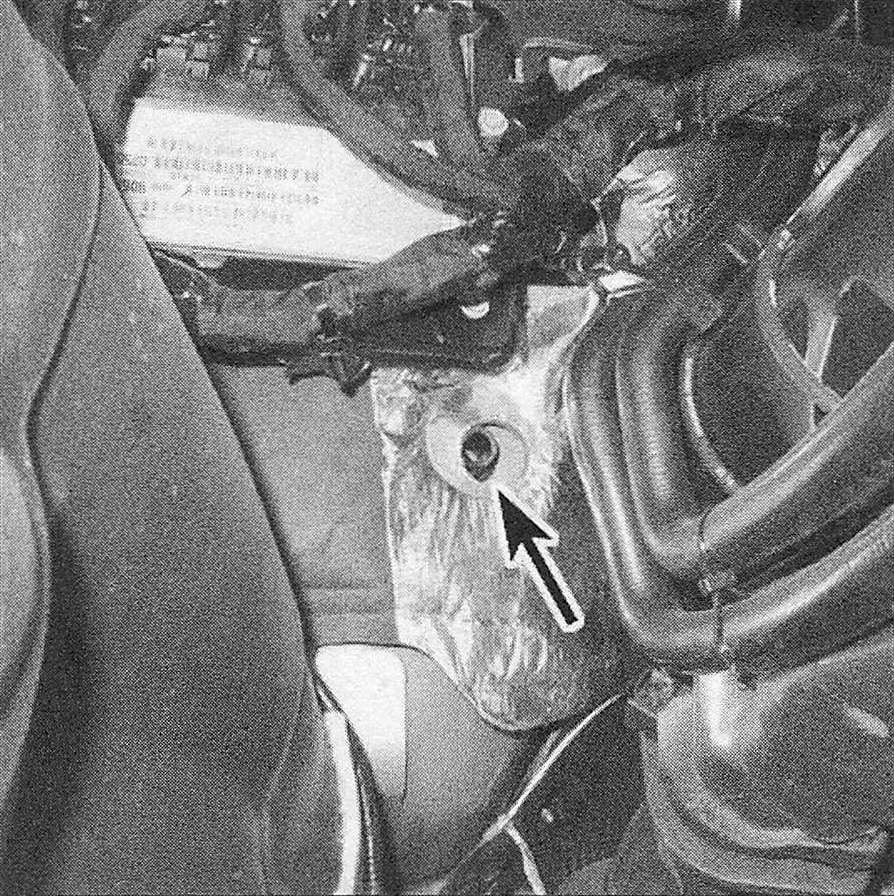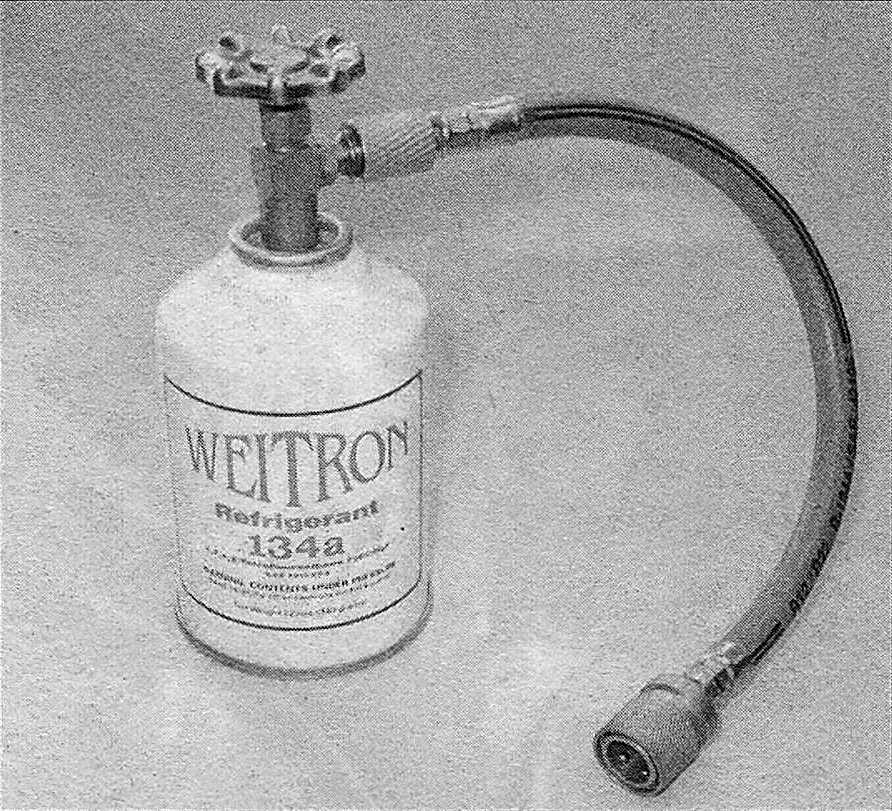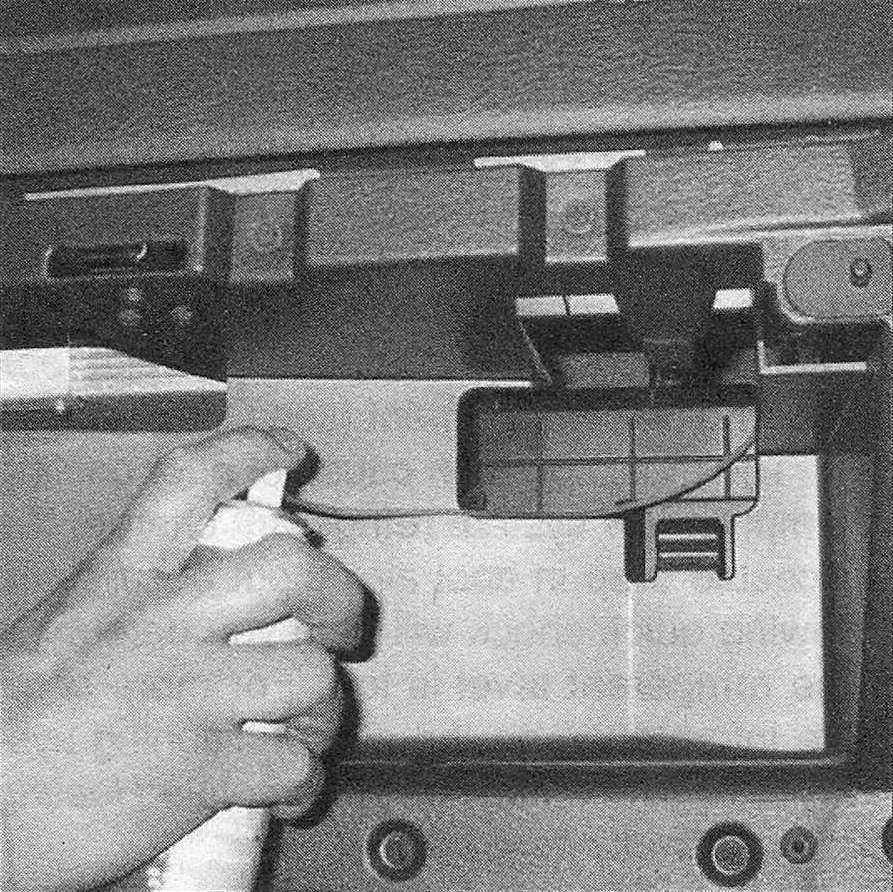Air conditioning and heating system – check and maintenance
Air conditioning system
Warning: The air conditioning system is under high pressure. Do not loosen any hose fittings or remove any components until after the system has been discharged. Air conditioning refrigerant must be properly discharged into an EPA-approved recovery/recycling unit at a dealer service department or an automotive air conditioning repair facility. Always wear eye protection when disconnecting air conditioning system fittings.
Caution: All models covered by this manual use environmentally friendly R-134a. This refrigerant (and its appropriate refrigerant oils) are not compatible with R-12 refrigerant system components and must never be mixed or the components will be damaged.
Caution: When replacing entire components, additional refrigerant oil should be added equal to the amount that is removed with the component being replaced. Read the can before adding any oil to the system, to make sure it is compatible with the R-134a system.
1. The following maintenance checks should be performed on a regular basis to ensure that the air conditioning continues to operate at peak efficiency.
a) Inspect the condition of the drivebelt. If it is worn or deteriorated, replace it (see Tune-up and routine maintenance).
b) Inspect the system hoses. Look for cracks, bubbles, hardening and deterioration. Inspect the hoses and all fittings for oil bubbles or seepage. If there is any evidence of wear, damage or leakage, replace the hose (s).
c) Inspect the condenser fins for leaves, bugs and any other foreign material that may have embedded itself in the fins. Use a fin comb or compressed air to remove debris from the condenser.
d) Make sure the system has the correct refrigerant charge.
e) If you hear water sloshing around in the dash area or have water dripping on the carpet, check the evaporator housing drain tube and insert a piece of wire into the opening to check for blockage. Note: The drain tube is at the bottom of the firewall on the passenger side (see illustration).
13.1 Check the evaporator housing drain tube for blockage – the view here is from under the engine compartment
2. It’s a good idea to operate the system for about 10 minutes at least once a month, particularly during the winter. Long-term non-use can cause hardening, and subsequent failure, of the seals.
3. Leaks in the air conditioning system are best spotted when the system is brought up to temperature and pressure, by running the engine with the air conditioning ON for five minutes. Shut the engine off and inspect the air conditioning hoses and connections. Traces of oil usually indicate refrigerant leaks.
4. Because of the complexity of the air conditioning system and the special equipment necessary to service it, in-depth troubleshooting and repairs are not included in this manual. However, simple checks and component replacement procedures are provided in this Chapter.
5. If the air conditioning system doesn’t operate at all, check the fuse panel and the air conditioning relay, located in the relay box in the engine compartment (see Chassis electrical system).
6. The most common cause of poor cooling is simply a low system refrigerant charge. If a noticeable drop in cool air output occurs, the following quick check will help you determine if the refrigerant level is low. For more complete information on the air conditioning system, refer to the Haynes Automotive Heating and Air Conditioning Manual.
Checking the refrigerant charge
7. Warm the engine up to normal operating temperature.
8. Place the air conditioning temperature selector at the coldest setting and put the blower at the highest setting. Open the doors (to make sure the air conditioning system doesn’t cycle off as soon as it cools the passenger compartment).
9. With the compressor engaged, the clutch will make an audible click and the center of the clutch will rotate. Feel the evaporator inlet pipe at the firewall with one hand while placing your other hand on the outlet pipe.
10. One should be colder than the other. If it isn’t, the system charge is probably low. The earliest warning that a system is low on refrigerant is the air temperature coming out of the ducts inside the vehicle. If the air isn’t as cold as it used to be, the system probably needs a charge.
11. Further inspection or testing of the system requires special tools and techniques and is beyond the scope of this manual.
Adding refrigerant
12. Buy an automotive charging kit at an auto parts store. A charging kit includes a can of refrigerant, a tap valve and a short section of hose that can be attached between the tap valve and the system low side service valve (see illustration). Caution: Although the system will hold more than one can of refrigerant, don’t add more than one can (you could overfill the system).
13.12 A basic charging kit for 134a systems is available at most auto parts stores – it must say 134a (not R-12) and so must the can of refrigerant
13. Hook up the charging kit by following the manufacturer’s instructions. Warning: DO NOT try to connect the charging kit hose to the system high side! The fittings on the charging kit are designed to fit only on the low side of the system.
14. Back off the valve handle on the charging kit and screw the kit onto the refrigerant can, making sure first that the 0-ring or rubber seal inside the threaded portion of the kit is in place. Warning: Wear protective eye-wear when dealing with pressurized refrigerant cans.
15. Remove the dust cap from the low-side charging port and attach the quick-connect fitting on the kit hose (see illustration).
13.15 Add refrigerant to the system at the low-pressure port (near the accumulator) – Hemi model shown
16. Warm up the engine and turn on the air conditioner. Keep the charging kit hose away from the fan and other moving parts. The charging process requires the compressor to be running.
17. Turn the valve handle on the kit until the stem pierces the can, then back the handle out to release the refrigerant. You should be able to hear the rush of gas. Add refrigerant to the low side of the system until both the accumulator surface and the evaporator inlet pipe feel about the same temperature. Allow stabilization time between each addition.
18. If you have an accurate thermometer, you can place it in the center air conditioning duct inside the vehicle (see illustration) and keep track of the outlet air temperature. A charged system that is working properly should cool to approximately 40-degrees F. If the ambient (outside) air temperature is very high, say 110-degrees F, or if the relative humidity is high, the duct air temperature may be as high as 60- to 70-degrees F, but generally the air conditioning is 30 to 50-degrees F cooler than the ambient air.
13.18 If you have an accurate thermometer, you can place it in the center air conditioning duct inside the vehicle
19. When the can is empty, turn the valve handle to the closed position and release the connection from the low-side port. Replace the dust cap.
20. Remove the charging kit from the can and store the kit for future use with the piercing valve in the UP position to prevent inadvertently piercing the can on the next use.
Eliminating air conditioning odors
21. Unpleasant odors that often develop in air conditioning systems are caused by the growth of a fungus, usually on the surface of the evaporator core. The warm, humid environment there is a perfect breeding ground for mildew to develop.
22. The evaporator core on most vehicles Is difficult to access, and factory dealerships have a lengthy, expensive process for eliminating the fungus by opening up the evaporator case and using a powerful disinfectant and rinse on the core until the fungus is gone. You can service your own system at home, but it takes something much stronger than basic household germ-killers or deodorizers.
23. Aerosol disinfectants for automotive air conditioning systems are available in most auto parts stores, but remember when shopping for them that the most effective treatments are also the most expensive. The basic procedure for using these sprays is to start by running the system in the Recirculating mode for ten minutes with the blower on its highest speed. Use the highest heat mode to dry out the system – keep the compressor from engaging by disconnecting the wiring connector at the compressor (Air conditioning compressor – removal and installation).
24. Make sure that the disinfectant can comes with a long spray hose. Work the nozzle through the opening in the heater/ air conditioning recirculation housing so that it protrudes inside and points toward the evaporator housing (towards the center of the instrument panel) (see illustration) and then spray according to the manufacturer’s recommendations. Try to cover the whole surface of the evaporator core, by aiming the spray up, down and sideways. Follow the manufacturer’s recommendations for the length of spray and waiting time between applications.
13.24 To disinfect the evaporator housing, insert the nozzle of the disinfectant can through the opening in the recirculation housing and point it toward the evaporator core (which is toward the left of the opening) – glove box removed for access
25. Once the evaporator has been cleaned, the best way to prevent the mildew from coming back again is to make sure your evaporator housing drain tube is clear.
Heating system
26. If the carpet under the heater core is damp, or if antifreeze vapor or steam is coming through the vents, the heater core is leaking. Remove it (Heater core – removal and installation) and install a new unit (most radiator shops will not repair a leaking heater core).
27. If the air coming out of the heater vents isn’t hot, the problem could stem from any of the following causes:
a) The thermostat is stuck open, preventing the engine coolant from warming up enough to carry heat to the heater core. Replace the thermostat (Thermostat – check and replacement).
b) There is a blockage in the system, preventing the flow of coolant through the heater core. Feel both heater hoses at the firewall. They should be hot. If one of them is cold, there is an obstruction in one of the hoses or in the heater core. Detach the hoses and back flush the heater core with a water hose. If the heater core is clear but circulation is still restricted, remove the two hoses and flush them out with a water hose.
c) If flushing fails to remove the blockage from the heater core, the core must be replaced (Heater core – removal and installation).




